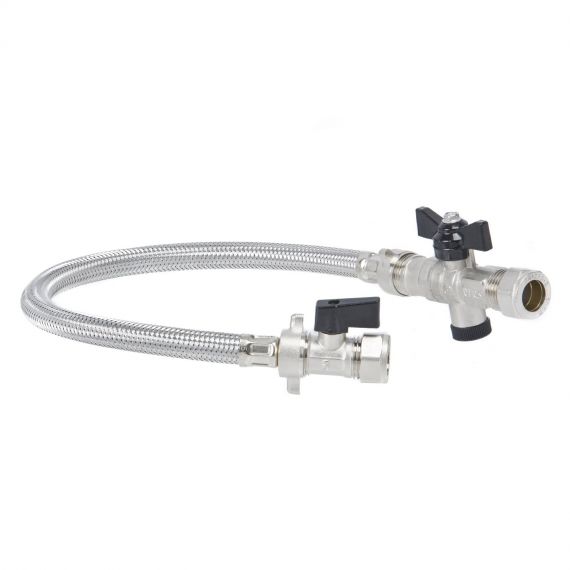Back to Basics with Filling Loops
Filling loops are an essential component for domestic central heating systems as a piece of apparatus used in the filling and pressurising of these systems. In apartment blocks with a centralised boiler plant, they are also used to fill and pressurise the secondary heating system of Heat Interface Units (HIUs).
So, what does a filling loop consist of?
To meet Water Regulations, the filling loop must consist of:
- WRAS approved backflow prevention device (a double check valve conforming to BS EN
- 13959 suitable for protection against a fluid category 3 risk)
- Temporary connecting pipe (a removable flexible hose)
- Service valve (2 isolating ball valves)
- 4 bar pressure gauge (optional)
If the water undertaker has concerns about the likelihood of contamination, or the suitability of a double check valve for example - due either to age, operating temperature or pressure fluctuations – under schedule 2 paragraph 15(4) of the Water Fittings Regulations, they can “require the installation of additional backflow protection”.
Is a pressure gauge required as a component?
The pressure gauge measures the pressure in the heating system and is especially useful when the filling loop is installed away from the boiler or when the boiler or HIU does not have an integral pressure gauge.
What is the maximum working pressure and temperature?
The maximum inlet pressure should be 10 bar and the maximum continuous temperature 85ºC.
Where should the filling loop be installed?
The filling loop is installed between the mains cold water supply inlet and the central heating return pipe in the boiler and HIU. The filling loop must be installed in accordance with the requirements of the Water Regulations-1999, Schedule 2, Section 8 Paragraphs G24.1 and G24.2.
Should a filling loop be connected permanently to the boiler?
In short, no, the filling loop should not be permanently connected to the boiler.
After the system has been filled and pressurised, the service valves must be closed, the system isolated and the flexible hose removed and stored until it is used again. Schedule 2, Paragraph 24 & G24.29a of the Water Regulations states the following in relation to temporary filling loops:
Where a closed circuit (heating system etc) has been categorised by the water undertaker as a fluid category 3 risk, the installation of a compliant double check valve on the fill point connection to the supply/distribution pipe may be considered as acceptable backflow protection.
Where a fill point connection incorporates a “flexible connection”, when not in use it is good practice for the hoses on these connections to be completely disconnected and removed, however a partial disconnection, that is to say only detaching one end of the hose, is equally acceptable providing that the disconnection is made between the hose and the backflow prevention device on the supply/distribution pipe.
Can a filling loop be installed any way round?
When installing an external filling loop, care must be taken to ensure that it is installed the right way around, otherwise the check valve will prevent the system from re-filling.
The Altecnic ALT-ST0035 has been designed to be installed in places engineers and homeowners can easily access without the need to disturb the boiler. This means that they can read the system pressure, check for pressure drop and, if needed, top up the system quickly. Supplied as 15mm compression connections it is also incredibly simple to install for the engineer.
What approvals are required?
Filling loops must be WRAS approved.
Trouble Shooting
Central heating filling loops rarely go wrong although the joints between the filling loop and the water pipes can sometimes leak if not made correctly. The filling loop tap (or ball valve) can sometimes be tight to operate if it is not used on a regular basis.
So, filling loops should always be installed and commissioned in accordance with the manufacturers 'Installation & Maintenance' instructions.

